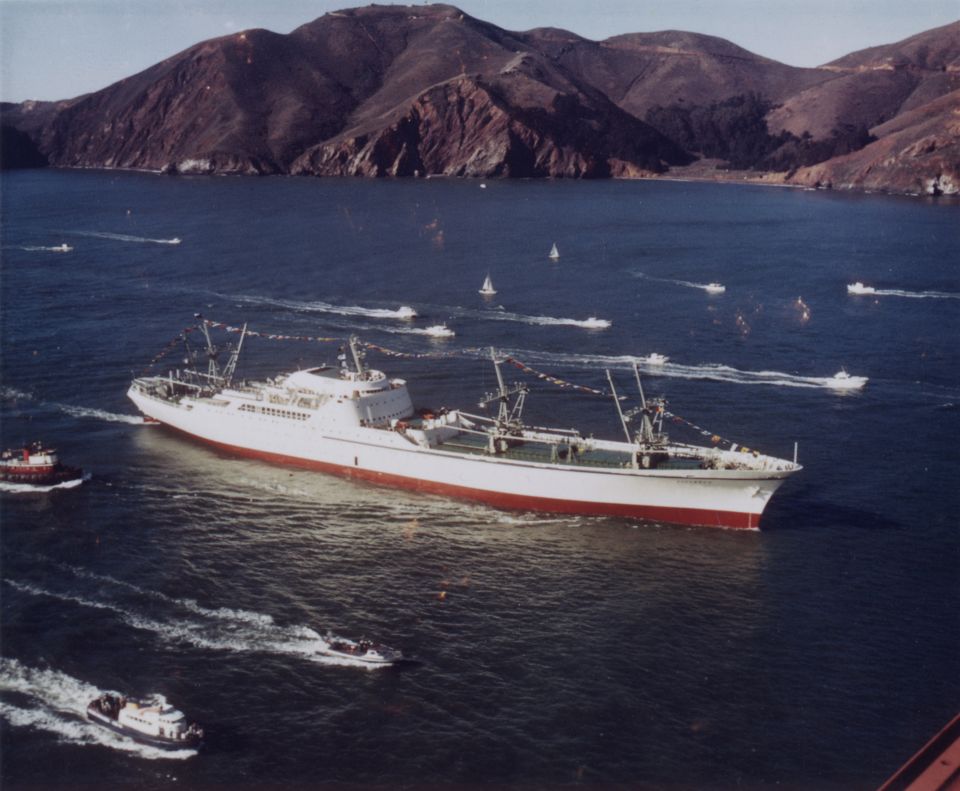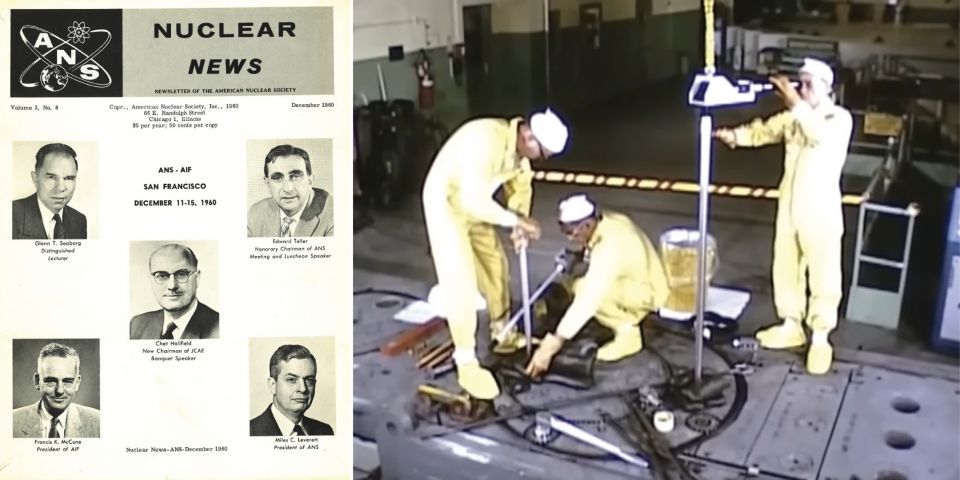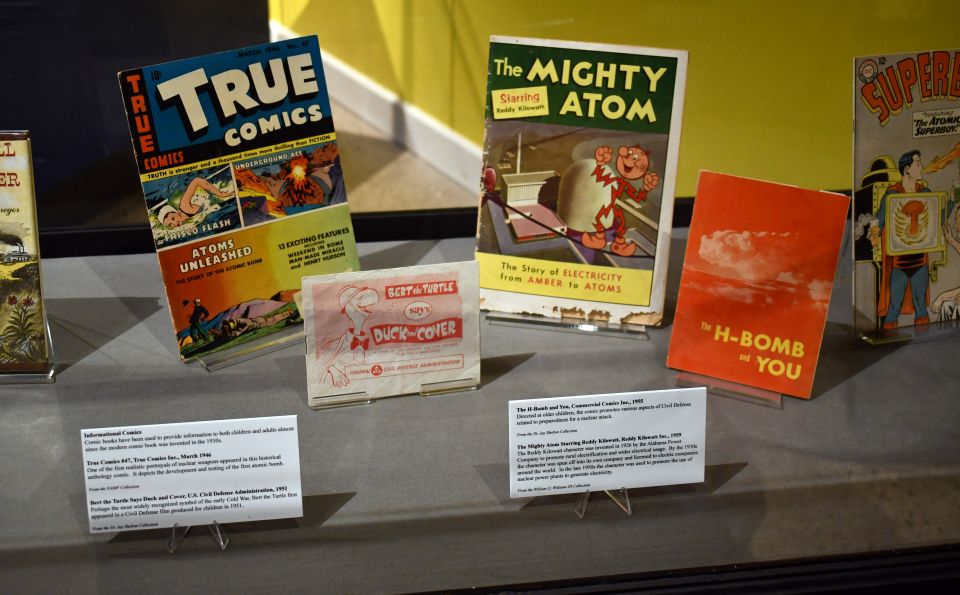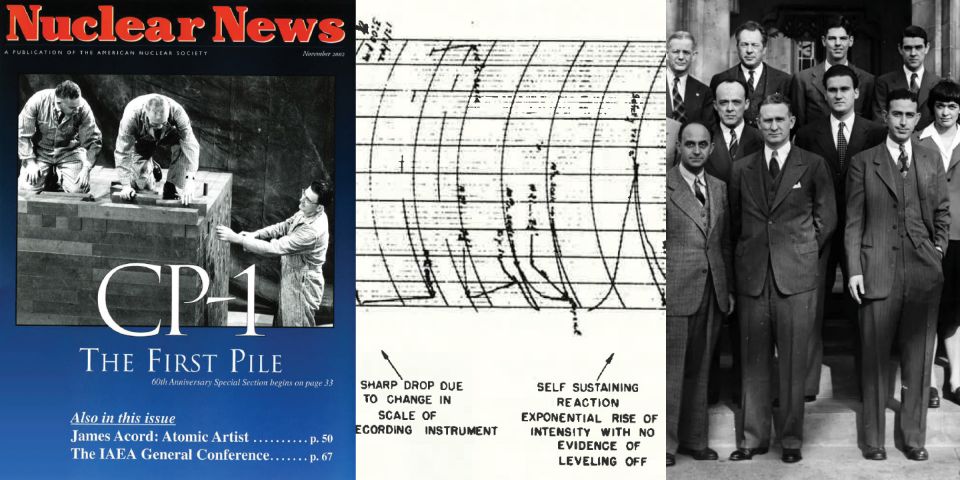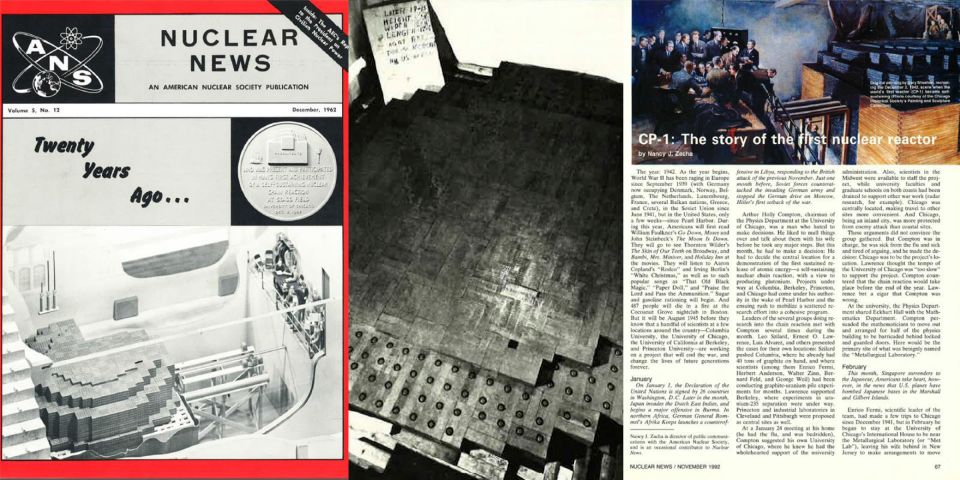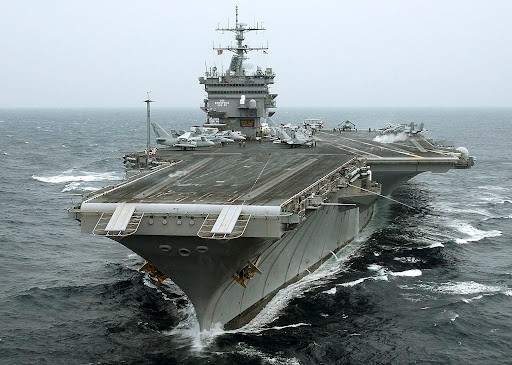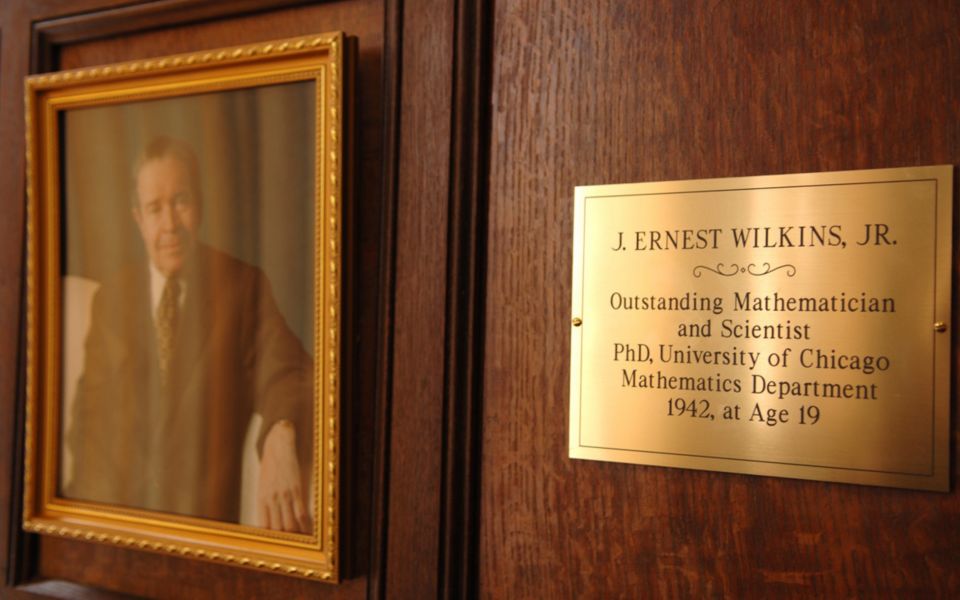A Small But Nagging Point
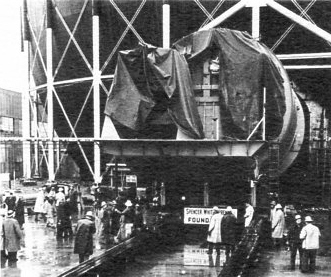
SIR (Submarine Intermediate Reactor) Naval Prototype Plant rolled into containment sphere at West Milton New York; March 20, 1954. From brochure "The Seawolf Story" in Will Davis library.
We're coming up on another anniversary of the startup of the Shippingport Atomic Power Station in early December. That plant was more or less a Navy plant (at least in terms of the NSSS or Nuclear Steam Supply System) built not for powering ships but instead for powering businesses and homes. The move to get that done was rapid and fluid - and now there's maybe a hint of evidence that it could have been a returned favor to Admiral Rickover.
The usual story of the Navy's early prototype plants is involved here, since the plant that became Shippingport was to have been one of these. In brief, the story goes as follows. Soon after the end of the Second World War, the Navy picked right up on the idea of powering ships with nuclear energy. In 1946 it signed a contract with Allis-Chalmers to study the Daniels Pile project at Oak Ridge, which was soon cancelled. However, both a water-cooled nuclear plant project (Project Wizard) and a sodium cooled nuclear plant project (Project Genie) were soon undertaken as just two parts of a large Navy program to develop airless propulsion for submarines. (The others, such as Walter turbines based on German U-boat practice, or the Krieslauf atmosphere-independent diesel engine, didn't work out.)
Now, this early history gets thrown out a whack a little bit if we look at some testimony that Admiral Rickover gave to the Joint Committee on Atomic Energy. Rickover had two sessions with the JCAE in 1957 on the Naval Reactor Program and on the Shippingport Project. During a discussion of the SIR or Submarine Intermediate Reactor, the sodium cooled submarine plant, Rickover said the following on the record:
"At the time we started working on the nuclear propulsion program, sir, we went to two equivalent approaches. At that time, in 1947, we did not know which one would work. As a matter of fact, at that time we thought sodium had a better chance of working than water. Sodium had been chosen by General Electric for their power breeder at Knolls Atomic Power Laboratory. Later on, when the Commission found that the design of the sodium-cooled power breeder was not going along well and the expense to build it would be too great, it was changed to a naval submarine project and we in the Naval Reactors Branch took it over." -- Hearings before the Subcommittees of the Joint Committee on Atomic Energy - Congress of the United States / Naval Reactor Program and Shippingport Project, March 1957, page 8.

SIR (later, S1G) prototype plant submergence tank. Press Photo in Will Davis library.
Now, I myself am a former Navy reactor operator, and I've never heard or read of the story of the SIR, later to be called S1G prototype plant, told the way Rickover told it to the JCAE in 1957. It seems clear that the Navy, from Rickover's words, took over for the AEC a floundering project in order to help AEC obtain funding to bring it to completion (even of course if the reactor was not a breeder.)
Of course, these events that Rickover is describing would have been within a year or two after the end of the Second World War. But, flash forward to 1953, the Navy decided in that year that with an enormous budget crunch ongoing (due to USS NAUTILUS expenses, jet aircraft, missiles and more) it was going to have to defer or cancel some important projects. One of those projects was the Naval Reactors CVR project -- the project to develop the nuclear power plant for an aircraft carrier. Within that year, the AEC elected to take the whole development of that project and transfer it over to a new, civilian-faced but decidedly Rickover-run project called the Shippingport Atomic Power Station. Complete continuity was maintained. There was no time was lost, and no talent dispersed.
Considering what a dud the sodium cooled reactor was turning out to be by 1953*, I myself like to think that the quick salvage of the CVR project was a returned favor to Rickover for helping save the sodium cooled plant project. His closeness to and favor with the AEC and the JCAE would easily have allowed it. Even if it wasn't, what is remarkable is the extreme fluidity and ease with which projects in those days migrated between labs, the AEC, and contractors. That would be a wonderful environment to still have today.
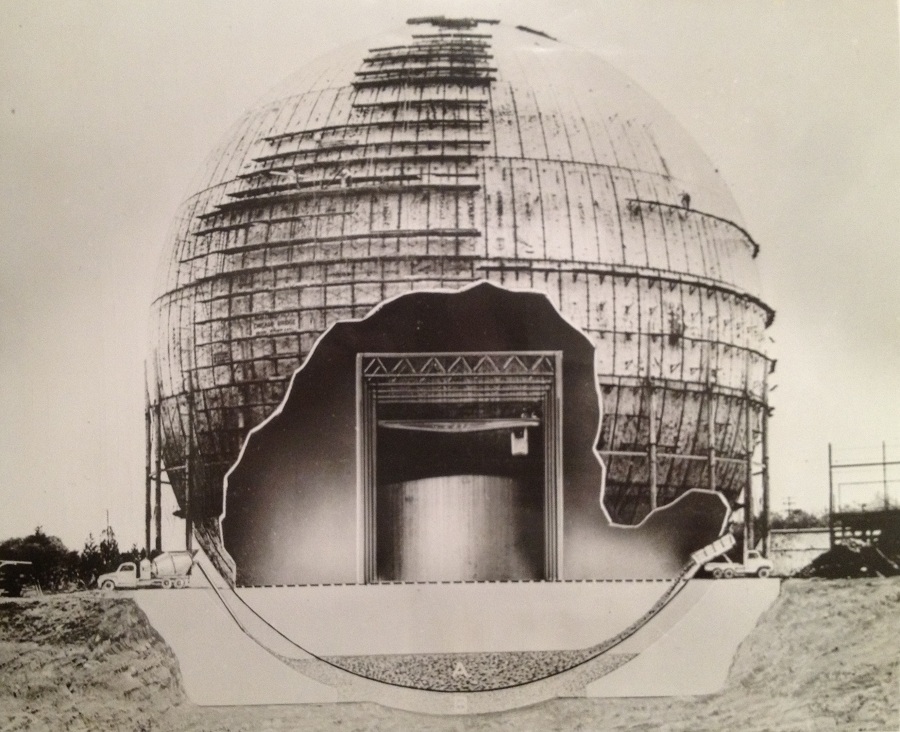
General Electric press photo airbrushed to show shielding tank for SIR, later S1G prototype inside 225 foot diameter spherical containment - the largest spherical containment ever built for a nuclear plant. Press Photo in Will Davis library.
* The SIR prototype, later the S1G when redesignated, eventually had to complete its trial run with its superheaters bypassed, since they were leaky. This same thing happened to USS SEAWOLF, SSN 575, which then operated for several years not being able to get over 60% power because of no superheat. Eventually SEAWOLF was repowered with a PWR NSSS (the Westinghouse S2Wa) and the prototype in New York was removed from the sphere, which was used for another prototype later. The Navy never looked at any sort of sodium cooled plant again.
 Will Davis is Communications Director and board member for the N/S Savannah Association, Inc. He is a consultant to the Global America Business Institute, a contributing author for Fuel Cycle Week, and he writes his own popular blog Atomic Power Review. Davis is also a consultant and writer for the American Nuclear Society, and serves on the ANS Communications Committee and on the Book Publishing Committee. He is a former US Navy reactor operator and served on SSBN-641, USS Simon Bolivar.
Will Davis is Communications Director and board member for the N/S Savannah Association, Inc. He is a consultant to the Global America Business Institute, a contributing author for Fuel Cycle Week, and he writes his own popular blog Atomic Power Review. Davis is also a consultant and writer for the American Nuclear Society, and serves on the ANS Communications Committee and on the Book Publishing Committee. He is a former US Navy reactor operator and served on SSBN-641, USS Simon Bolivar.



